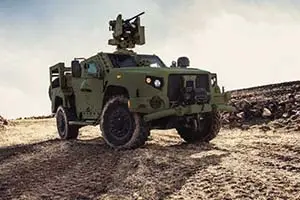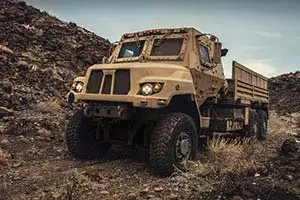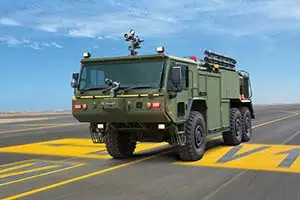OSHKOSH DEFENSE ELECTRIC VEHICLES (EV)
Electrification of military and delivery vehicles is transforming fleet operations and maintenance
The Sound-and Fuel-of your Fleet is Changing
Alternative mobility options are here. From reducing overall maintenance and fuel costs for your fleet of delivery vehicles to improving mission stealth in your military vehicles, Oshkosh Defense’s electric vehicles include fully electric and hybrid options.
Our current family of electric and hybrid vehicles includes: Oshkosh Defense Next Generation Delivery Vehicle (NGDV), ProPulse® Hybrid Diesel-Electric System with Export Power and the Light Combat Tactical Vehicle (LCTV),
Explore Electrification at Oshkosh Defense
Next Generation Delivery Vehicle (NGDV)
Oshkosh Defense builds both zero-emission battery-electric (BEV) and fuel-efficient low-emission internal combustion engine (ICE) vehicles to fulfill NGDV needs. Both Oshkosh Defense’s ICE and BEV models offer significant improvements in fuel efficiency and reduced emissions compared to traditional delivery vehicles.
Additionally, the Oshkosh Defense NGDV offers the flexibility of both low-emission internal combustion engines and zero-emission battery-electric powertrains on a single chassis. This design feature allows the delivery vehicle fleets to be retrofitted from any internal combustion engine NGDV to a battery-electric powertrain to capture advances in electric vehicle technologies.

ProPulse® Hybrid Diesel-Electric System with Export Power
Designed for the performance demands of heavy-duty vehicle applications, the Oshkosh® ProPulse® hybrid diesel-electric system dramatically improves fuel economy up to 20 percent and serves as an on-board generator with enough output to power an entire airfield or hospital.
The silent drive, extended silent watch, enhanced fuel economy, and increased exportable power makes ProPulse® technology a great option for combat and reconnaissance scenarios.
ProPulse® systems use a modular series-hybrid arrangement to simplify the transmission of power to the wheels. Its diesel engine powers a large electric generator distributing power to each axle module, which is driven independently by a dedicated motor controlled from its own power converter. And life-cycle costs are dramatically reduced because the full electric system lowers torque throughout the drivetrain and regenerative braking increases brake life.
ProPulse® hybrid diesel-electric system enables significant fuel economy because of a tailored engine control strategy.
20% Fuel economy improvement over conventional driveline vehicle (preliminary Oshkosh internal test data)
+35% at 20 mpg (32 kph) cruising speed
+20% at 60 mph (96.5 kph) cruising speed
+30% start/stop (0-25 mpg; 0-40 kph)
The ProPulse® hybrid diesel-electric system is already in use in the Oshkosh® Heavy Expanded Mobility Tactical Truck (HEMTT) A3 and Medium Tactical Vehicle Replacement (MTVR).
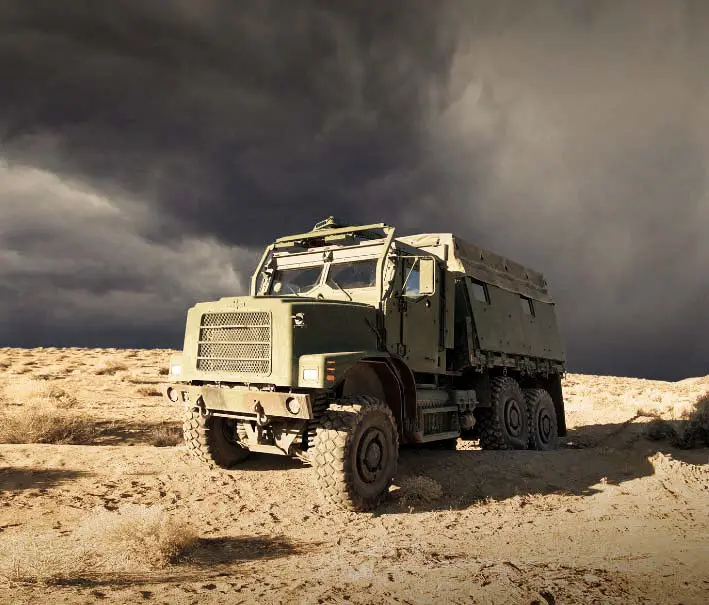
Light Combat Tactical Vehicle (LCTV)
The Oshkosh Defense® Light Combat Tactical Vehicle (LCTV) incorporated early advancements in the TAK-4® independent suspension system and ProPulse® diesel-electric system. The diesel-electric powertrain delivers improved fuel economy and exports significant levels of electrical power.
With these technologies, the LCTV was the world’s first armored military vehicle to successfully endure the extreme terrain of the SCORE International Baja 1000 off-road race in November 2010. The Baja 1000 is a 1,050-mile race across the Baja California Peninsula. The LCTV accomplished what nearly 40% of racers failed to do — complete the challenging course.
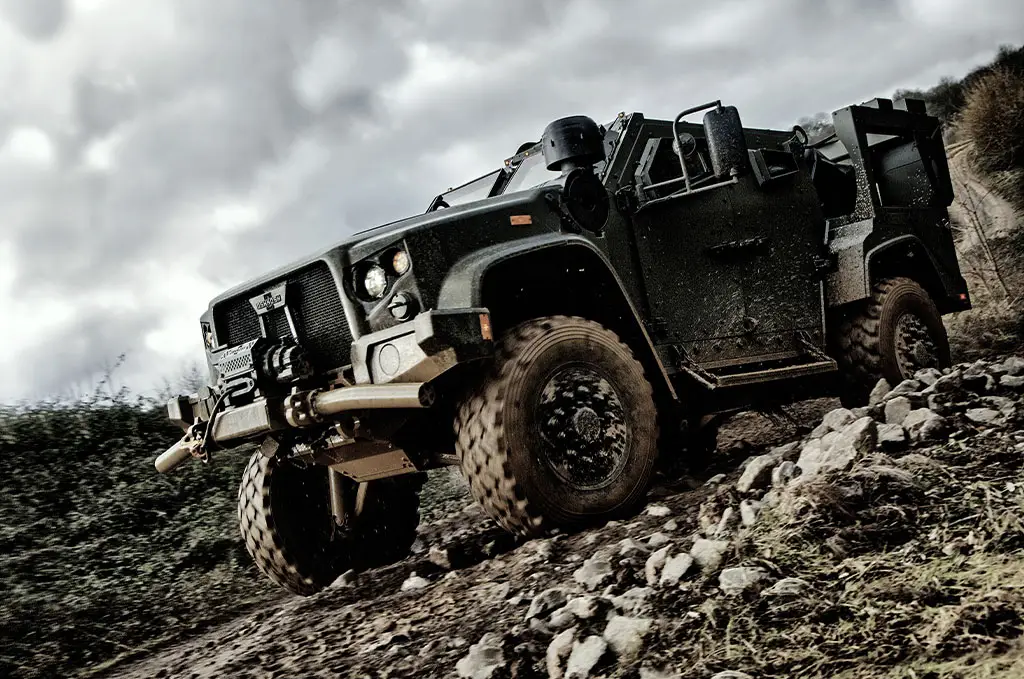
Designed for the performance demands of heavy-duty vehicle applications, the Oshkosh® ProPulse® hybrid diesel-electric system dramatically improves fuel economy up to 20% percent and serves as an on-board generator with enough output to power an entire airfield or hospital.
The silent drive, extended silent watch, enhanced fuel economy, and increased exportable power makes ProPulse® technology a great option for combat and reconnaissance scenarios.
ProPulse® systems use a modular series-hybrid arrangement to simplify the transmission of power to the wheels. Its diesel engine powers a large electric generator distributing power to each axle module, which is driven independently by a dedicated motor controlled from its own power converter. And life-cycle costs are dramatically reduced because the full electric system lowers torque throughout the drivetrain and regenerative braking increases brake life.
ProPulse® hybrid diesel-electric system enables significant fuel economy because of a tailored engine control strategy.
- 20% Fuel economy improvement over conventional driveline vehicle (preliminary Oshkosh internal test data)
- +35% at 20 mpg (32 kph) cruising speed
- +20% at 60 mph (96.5 kph) cruising speed
- +30% start/stop (0-25 mpg; 0-40 kph)
The ProPulse® hybrid diesel-electric system is already in use in the Oshkosh® Heavy Expanded Mobility Tactical Truck (HEMTT) A3 and Medium Tactical Vehicle Replacement (MTVR).
Oshkosh Defense builds both zero-emission battery-electric (BEV) and fuel-efficient low-emission internal combustion engine (ICE) vehicles to fulfill NGDV needs.. Both Oshkosh Defense’s ICE and BEV models offer a significant improvements in fuel efficiency and reduced emissions compared to traditional delivery vehicles.
Additionally, the Oshkosh Defense NGDV offers the flexibility of both low-emission internal combustion engines and zero-emission battery-electric powertrains on a single chassis. This design feature allows the delivery vehicle fleets to be retrofitted from any internal combustion engine NGDV to a battery-electric powertrain to capture advances in electric vehicle technologies.
The Oshkosh Defense® Light Combat Tactical Vehicle (LCTV) incorporated early advancements in the TAK-4® independent suspension system and ProPulse® diesel-electric system. The diesel-electric powertrain delivers improved fuel economy and exports significant levels of electrical power. With these technologies, the LCTV was the world’s first armored military vehicle to successfully endure the extreme terrain of the SCORE International Baja 1000 off-road race in November 2010. The Baja 1000 is a 1,050-mile race across the Baja California Peninsula. The LCTV accomplished what nearly 40% of racers failed to do — complete the challenging course.



